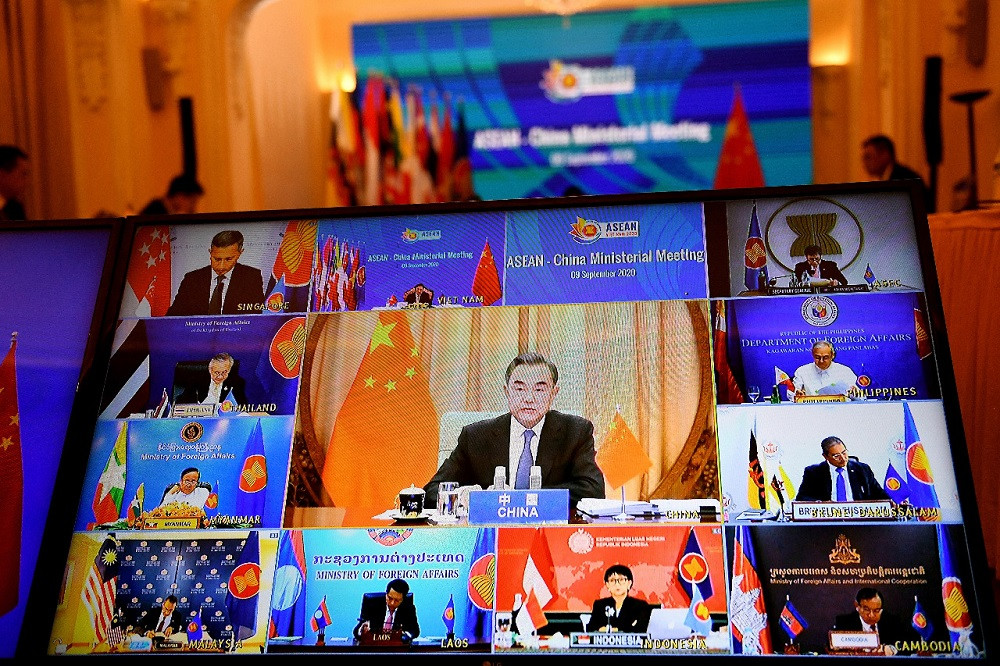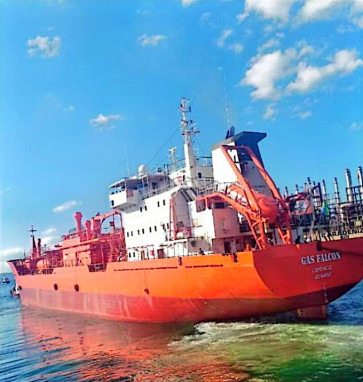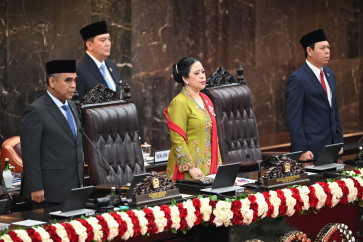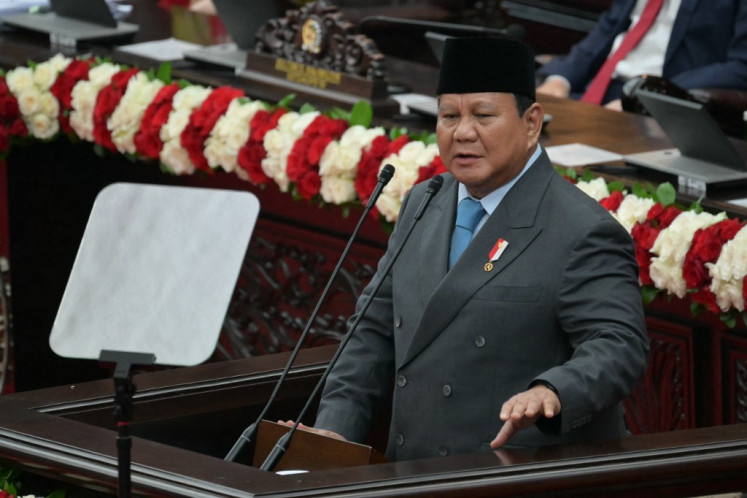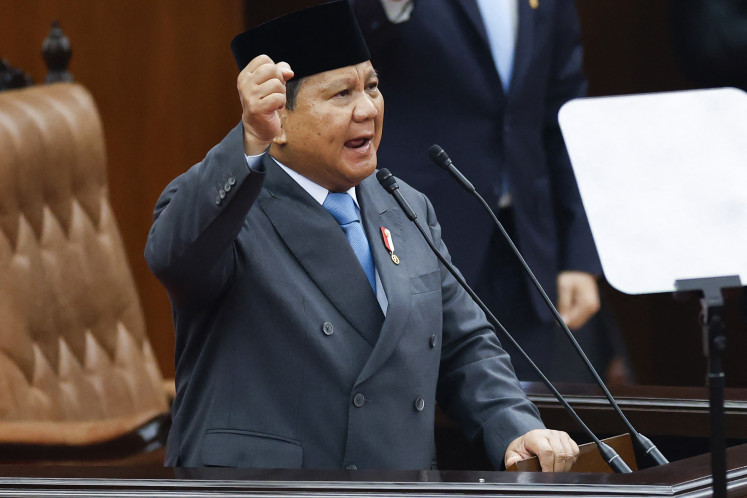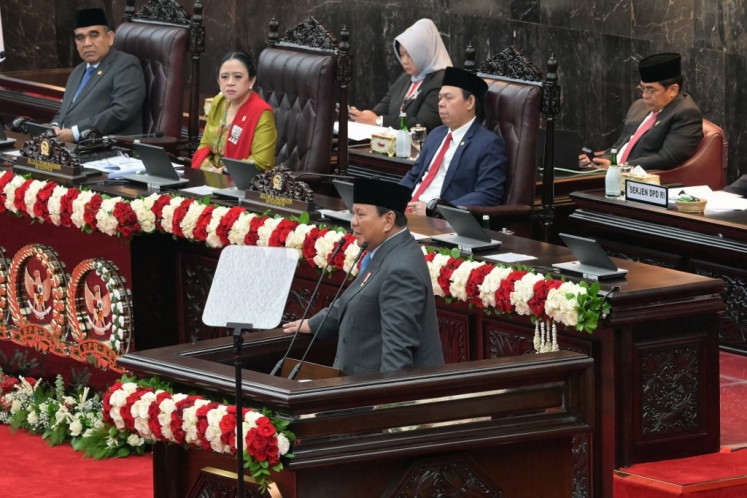Popular Reads
Top Results
Can't find what you're looking for?
View all search resultsPopular Reads
Top Results
Can't find what you're looking for?
View all search resultsChina-ASEAN relations: Working together for a closer community and shared future
As China and ASEAN look forward to the next three decades of dialogue relations, the two sides need to pull all stops in recovering the region from the pandemic toward solid growth.
Change text size
Gift Premium Articles
to Anyone
C
hina-ASEAN dialogue relations were established in 1991. The past 30 years, though a short stretch of history, have been a glorious chapter highlighted by mutual friendship and cooperation.
Evolving from a dialogue partnership to a strategic partnership, China and ASEAN are about to embrace a comprehensive strategic partnership that is already the most dynamic, substantive and influential in the entire region.
Over the past three decades, China and ASEAN have deepened strategic mutual trust and enhanced good neighborliness. Leaders of the two sides have maintained close communication through multiple means. In recent years, Chinese President Xi Jinping has visited the 10 ASEAN member states and has met with leaders of ASEAN countries many times, steering the course of China-ASEAN relations.
Strategic communication on major issues between the two sides has been conducted in a timely manner through the multi-level dialogue mechanism, including between top leaders, ministers and senior officials.
With our shared commitment to multilateralism, China and ASEAN jointly uphold the ASEAN-centered regional architecture that is open and inclusive. Together, we have safeguarded regional peace and stability and properly managed our differences on the South China Sea issue through dialogue and consultation.
Over the past 30 years, China and ASEAN have offered each other much-needed support in trying times. The two have worked in concert to tide over one crisis after another, such as the 1997 Asian financial crisis, the 2003 Severe Acute Respiratory Syndrome outbreak, the 2004 bird flu epidemic and the 2008 global financial crisis.
Since the COVID-19 pandemic struck, we have done our utmost to render assistance to each other. Urgently needed anti-COVID materials have been supplied in an uninterrupted manner, experience in prevention and control has been shared, and cooperation has been enhanced in vaccine research and development, supply and production. China and ASEAN are proud to represent an exemplary model of international anti-COVID cooperation.
Over the past 30 years, China and ASEAN have promoted development-oriented cooperation for our mutual benefit. Our two-way trade grew from US$8.36 billion in 1991 to $685.28 billion in 2020, and it totaled $630.5 billion in the first three quarters of this year. Last year, China and ASEAN became each other’s largest trading partner for the first time in history.
The 2-billion-strong combined population of China and ASEAN countries represent a huge consumer market and the largest free trade zone among developing countries. The Regional Comprehensive Economic Partnership (RCEP), among other trade arrangements, opens broad, new prospects for China-ASEAN economic and trade engagement.
Over the past 30 years, China and ASEAN have drawn our peoples closer together. In 2019, 65 million people made mutual visits and nearly 4,500 weekly flights traveled between China and ASEAN countries. Exchange mechanisms have continued to expand in the fields of education, culture, tourism, youth, research and journalism. Despite the adverse impacts of the pandemic, our people-to-people exchanges on the cloud have been ever more robust.
The special summit to commemorate the 30th anniversary of ASEAN-China dialogue relations is to take place in a few days. It will be an important milestone in our relations to build on the past and plan for the future. Our top leaders are expected to further deepen political mutual trust, enhance cooperation and map our the way forward.
It is critical for China and ASEAN to seize the momentum, tap the full potential of our relations and build a closer China-ASEAN community with a shared future for the benefit of our 2 billion people in 11 countries. I believe priority could be given to the following four areas:
First, jointly defeat the pandemic and boost the regional economy. Vaccine cooperation is of special significance, including accelerated efforts to build regional vaccine production and distribution centers in Southeast Asia. The COVID-19 pandemic will not be the last on the planet. To be well prepared in the future, efforts need to be made to enhance emergency response capacities through public health cooperation.
In the meantime, China and ASEAN need to go all in to promote comprehensive, regionwide post-COVID recovery and steer our region back onto a solid growth track, especially by keeping the industrial supply chains unclogged.
Second, foster new areas of growth in pursuit of common development. It is key for the two sides to improve regional connectivity by better synergizing development policies and advancing high-quality Belt and Road cooperation. China and ASEAN need to ensure the sound implementation of the upgraded China-ASEAN Free Trade Agreement and fully leverage RCEP, which will enter into force next year to shape an Asia-Pacific free trade area.
Innovation-driven growth also deserves our increased endeavors, and new areas of cooperation might be explored in smart cities, e-commerce, artificial intelligence, new energy and technologies for environmental protection.
Third, nurture closer people-to-people ties. Exchanges await expansion in culture, education, sports, women and youth, as well as exchanges for our media and think tanks. Mutual understanding between our younger generations is to be deepened further through flagship projects such as the ASEAN-China Young Leaders Scholarship, the ASEAN-China Short Video Contest, the ASEAN-China Media and Think Tank Forum. More could be done also to enhance mutual learning and nurture our shared East Asian values.
Fourth, safeguard international justice through solidarity and coordination. It is of paramount importance for China and ASEAN to jointly safeguard the United Nations-centered international system and the basic norms governing international relations based on the principles and purposes of the UN Charter. We must join hands to champion the spirit of cooperation in East Asia and multilateralism with Asian characteristics, oppose zero-sum games and hegemonic bullying and maintain a regional cooperation framework that is open and inclusive.
As friendly neighbors, China and ASEAN need to maintain communication at all levels and continue to support each other on issues concerning each other’s core interests. Differences shall continue to be managed through dialogue and consultation, which is an important way of deepening strategic mutual trust.
As an old Chinese poem goes, “The river is wide at full tide; a strong wind sends the sail surging forward.” I have full confidence that with our concerted efforts, the giant ship of China-ASEAN friendship and cooperation will sail ahead steadily and make greater contributions to peace, stability, development and prosperity of Asia.
I look forward to another exciting 30 years of China-ASEAN relations.
***
The writer is Chinese Ambassador to ASEAN.

